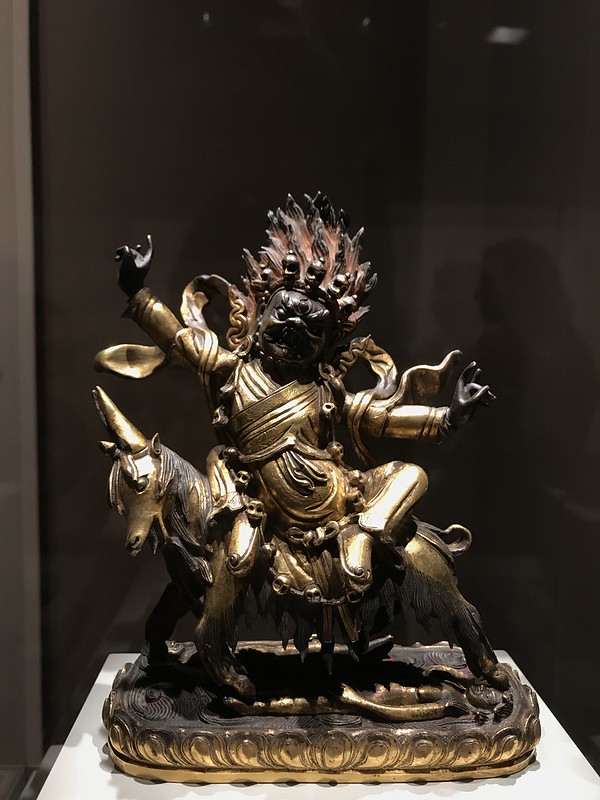I loved the incorporation of sound into the exhibits at the Rubin. The shrine room was really beautiful, and the sound of the chanting really emphasized it’s feel. I liked how every single item in the room meant something and was there for a very specific reason. I never really consider the way in which sound leaves an impression on my memory, or on my daily life, and I felt that the format of the museum allowed for the sound sections to be emphasized and to stick with the viewer, even after walking past them.
Here are three pieces I really enjoyed at the museum that I felt related to memory:
This piece was representational of the dead being free of responsibility and worldly struggles that tied them down, and in death being able to be carefree. Though it doesn’t directly deal with our memories, it felt like a way to remember loved ones in a positive way – often we feel that death is a negative thing, and I felt this piece memorialized those we care about in a positive light. It imagines the dead as happy and enjoying the afterlife, which makes it easier for people to let go of their loved ones in memory.
This was an audio piece that I listened to through headphones. I really liked the way it conceptualized memory through sound. It described memory as small fragments that come together into concepts, breaking apart, and making new pieces. The piece executed the feeling of memory and being through only sound, which was impressive.
This piece depicts a protective deity from Buddhist tradition. It appears fierce, and is meant to clear obstacles and represents wisdom. I felt it related to memory because figures like these allow us to remember and continue to appreciate ancient traditions and practices. Art such as this most likely reminded people that they were protected by the deity, and now, serves a different function through memory – it allows us to not forget these practices and forms of tradition or religion.


